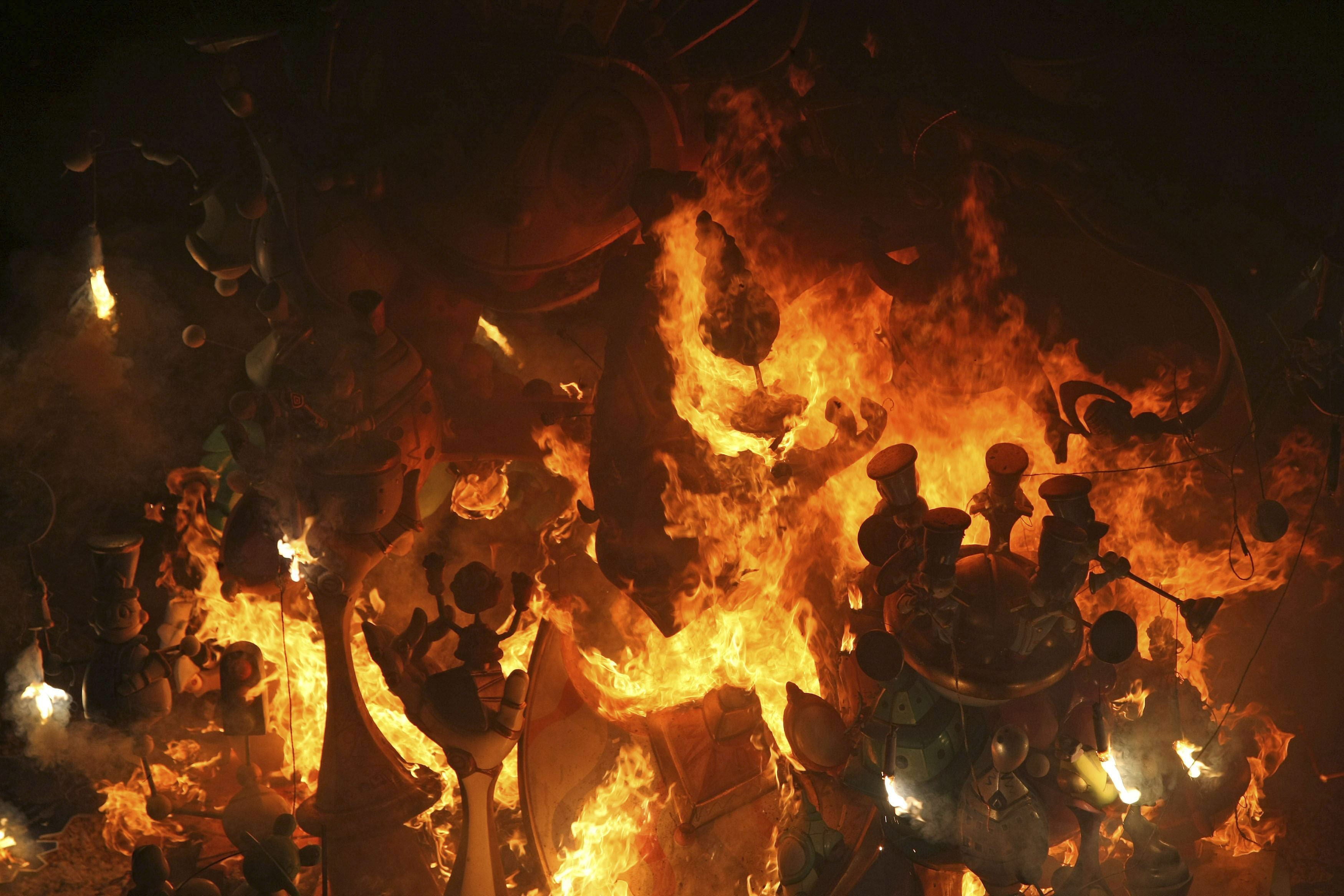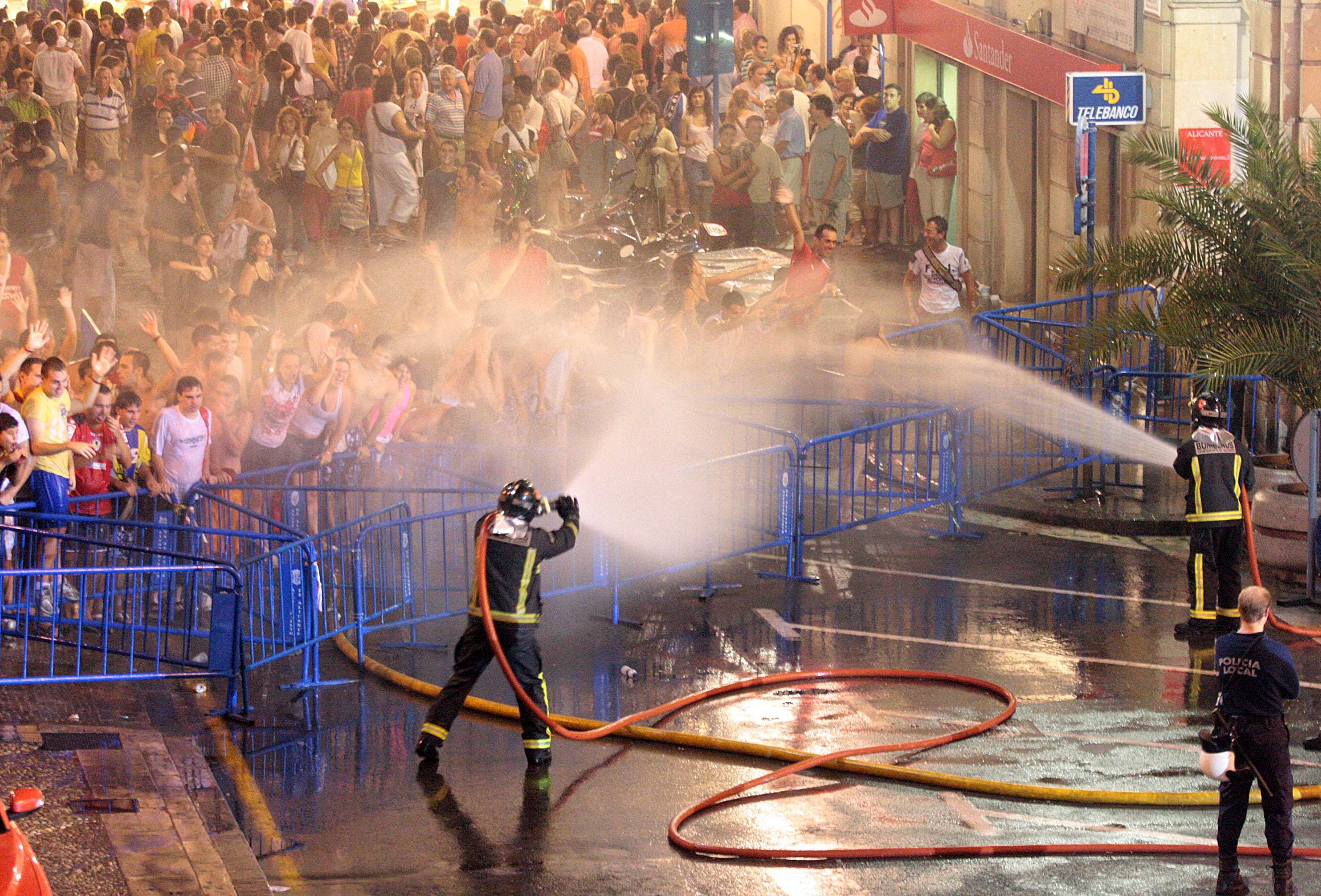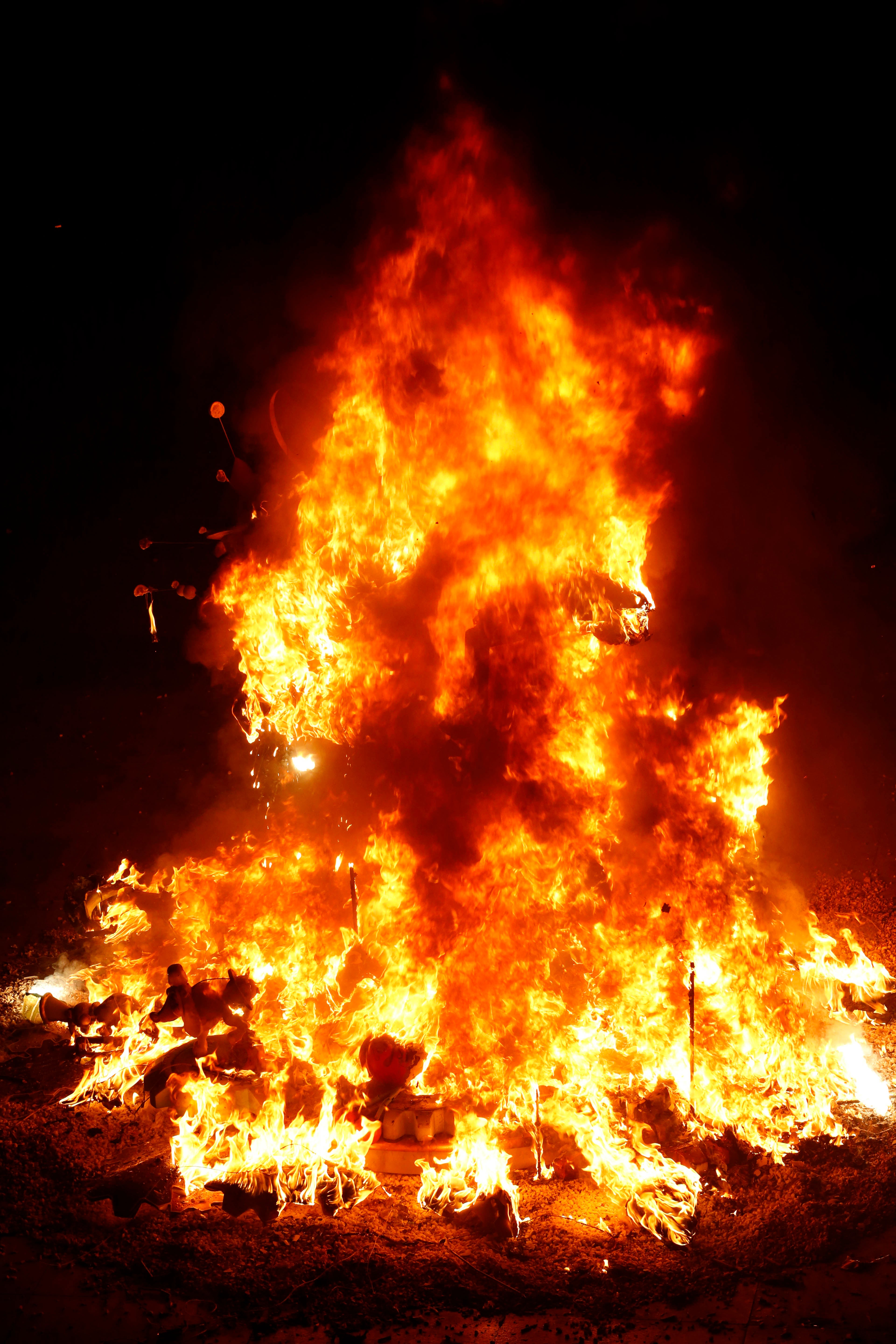Where to see the most spectacular San Juan bonfires in Alicante and who created them this year.

Alicante is currently celebrating its big week with its festivals, declared of International Tourist Interest. These are the Bonfires of San Juan , which have already been set up in the city 's streets.
During the early hours of Thursday into Friday, the artists finalized the details of their work and raised their finishes with precision. Thus, the adult bonfires join the children's bonfires that had their "plantà" this Thursday. Alicante residents and tourists can now stroll through the streets to see the 91 bonfires distributed throughout the different neighborhoods and observe every detail of the ensembles.
The bonfires of San Juan once again transport us to a world of fantasy, color, and joy, but also of social criticism and, above all, a message laden with irony . Among all the monuments erected in the streets, there are nine of special significance that every visitor or festival-goer should stop by to admire. These are the nine special-category bonfires.
1
2
3
4
5
6
7
8
9
These nine bonfires are the most complex and tallest. In fact, they begin to be assembled a couple of days beforehand because everything must fit together perfectly so they look their best and no mistake can be fatal. From these, the best monument of the year will emerge, winning first prize in its category . In addition, each one also has its corresponding children's bonfire, a smaller piece located right next to it.
Due to their size, importance (and budget), these are a must-see for any tourist or Alicante resident, as it's also interesting to see how they transform from sketch to reality. However, the city and the festival have much more to offer. Each commission plants its own bonfires, and although smaller, they all involve great artistic work, making it worth appreciating the details of each one.
-
Provincial Council Bonfire - Renfe: Station Avenue
-
Seneca Bonfire Buses: Pintor Aparicio Street - Seneca Square
-
Baver Bonfire - Els Antigons: Mayor José Luis Lassaletta Street
-
Carolinas Altas Bonfire: Pinoso Street
-
Bonfire in La Viña Square: La Viña Square
-
Florida Bonfire Portazgo: Cefeo Street
-
La Cerámica Bonfire: Calle Alfonso Guixot Guixot
-
Bonfire San Blas Industrial Estate: Guadalest Street
-
Port d'Alacant Bonfire: Old Port Promenade
In addition to all of these, it's also essential to visit the official bonfire, the one in Town Hall Square , which, when the time comes, will also be the first to be burned, and which we can consider the tenth special category bonfire.
In total, the bonfires are divided into seven categories: special, first, second, third (A and B), fourth, fifth (A and B), sixth, and seventh. There are 91 monuments, along with their 91 smaller sisters, the children's bonfires.
The Alicante Bonfires aren't just a few places to visit throughout the days. From this Friday, June 20th, until the 24th —the main day of the festival—the city is filled with events and activities.
In addition to the bonfires themselves, it's also advisable to stop and admire the portals of the huts and racó, also held in competition and very distinctive for each group of festival-goers.
But if there's one thing that distinguishes the Bonfires of San Juan, it's the mascletàs . Every day of the festival at 2:00 p.m., various fireworks come together in the Plaza de los Luceros in a thunderous sound show. These are the ones that will be set off over the next few days:
-
Friday, June 20: Ferrández fireworks
-
Saturday, June 21: Alto Palancia fireworks
-
Sunday, June 22: Mediterranean Fireworks
-
Monday, June 23: Ferrández Brothers fireworks
-
Tuesday, June 24: Sirvent Brothers fireworks
In addition to bonfires and stalls, there are other unmissable events that also allow you to join in the festivities and see firsthand the clothing of the people of Alicante.
They are the flower offerings, where on the 21st and 22nd, foguerers, barraquers, and the whole of Alicante society parade through the streets to the Co-Cathedral of San Nicolás to offer their bouquets to the city's patron saint, the Virgin of Remedio. Other events include the parades of children and giants and the international folklore parade.
-
Saturday, June 21: First session of the flower offering (6:00 p.m.)
-
Sunday, June 22: Children and Giants Parade (1:00 p.m.)
-
Sunday, June 22: Second session of the flower offering (6:00 p.m.)
-
Monday, June 23: Children and Giants Parade (1:00 p.m.)
-
Monday, June 23: Alicante dance around the official bonfires (6:00 p.m.)
-
Monday, June 12: International Folklore Parade (7:00 p.m.)
-
Monday, June 24: Children and Giants Parade (1:00 p.m.)
The Alicante Bonfires are also the perfect opportunity to try the most typical product of the region and the festival: coca amb tonyina ( a traditional dish of "coca amb tonyina"), accompanied by figs. It's also the perfect opportunity to immerse yourself in the city's nightlife by strolling through the shacks and racós (bars) set up in the neighborhoods.
The Alicante Bonfires were officially raised to the sky this Friday, June 20th. On Tuesday, June 24th, the flames will rise to conclude this year's festival and restart the calendar in anticipation of the 2026 celebrations.
At midnight on June 24th and 25th, the palm tree launched from Santa Bárbara Castle signals the start of the 'Nit of Fire' or 'Nit of the Burning of Fire' . Little by little, neighborhood by neighborhood, the bonfires will be reduced to ashes from midnight until well into the night. Firefighters will also perform another of the festival's traditions, the 'Banyà', which consists of refreshing all those gathered around the burning of monuments.



Once this ritual is over, the streets will return to their original state, but the city will begin its fireworks competition, which will bring Alicante residents together on Postiguet beach for a week to watch this new pyrotechnic display at midnight until June 29.
ABC.es





